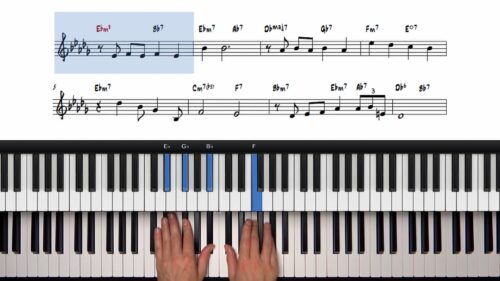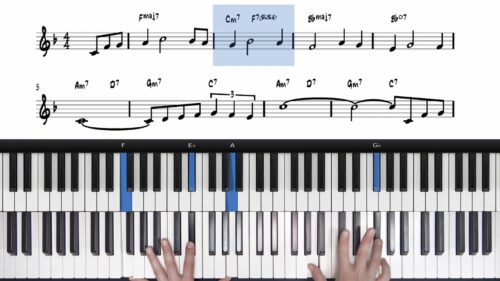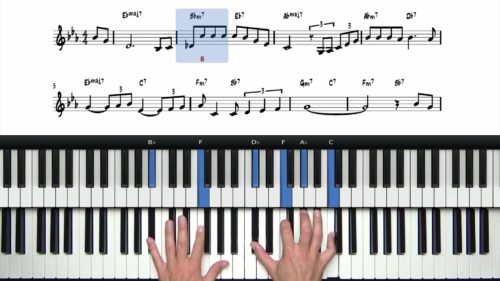Adding Chord Alterations
In this lesson we apply chord alterations to the dominant chords in the A section of ‘Body & Soul’. We also touch upon the concept of upper structure triads which we will explore further in subsequent lessons of this course.
Identify The Dominant Chords
Chord alterations are most commonly applied to dominant chords and so we begin by identifying the dom 7 chords in the A section which are Bb7 (bar 1), Ab7 (bar 2), Gb7 (bar 3), F7 (bar 6), Ab7 (bar 7), Bb7 (bar 8).
We explore a step-by-step method for experimenting with the altered tones – b9, #9, #11, and #5/b13 – and finding the most suitable choices that work with the harmony and the melody.
Create Colour & Texture
Chord alterations allow us to create wide variety of voicing colours and textures. We also explore how these combinations can create stronger voice leading possibilities in the 25 and 251 progressions.
An Optional Addition To The Harmony
Understand that chord alterations are an optional addition to the core harmony which is the roots, 3rds, and 7ths. We discuss and examine that in some instances, an unaltered voicing is a better choice to avoid clashes with the harmony, the melody, or both! The Gb7 in bar 3 is an example where an unaltered voicing works better with the harmony and melody.
Multiple Alteration Options
Often we have multiple choices and we can choose between the alterations based on our taste. In addition we have the freedom to play a single alteration, multiple alterations, or an upper structure triad voicing which we explore later in this course.
Theory & Application Of Chord Alterations
Throughout this lesson we demonstrate altered voicings for each dominant chord, explain the theoretical concepts behind the alterations, and apply the alterations in context of the harmony and melody to help you to develop a deeper understanding of altered jazz chord voicings and progressions.
Lesson Downloads
-
Chord Alterations Notation File Type: pdf
Practice Tips
-
Alterations are mainly applied to dominant chords, however they can also be applied to other chord types.
-
First identify the dominant chords in the form as we do at the start of this lesson.
-
Always pay attention to the melody note. Avoid half step intervals between the alteration and the melody note which can create too much dissonance and an unpleasing sound.
-
First experiment with single alterations, then double alterations, and later in this course we will introduce upper structure triad voicings.
-
Chord alterations are a very effective tool to add more interest to our playing but this doesn't mean that we have to apply them to every dominant chord.
-
It's important to maintain a balance between altered and unaltered voicings and understand that alterations may not be suitable for every dominant chord.







